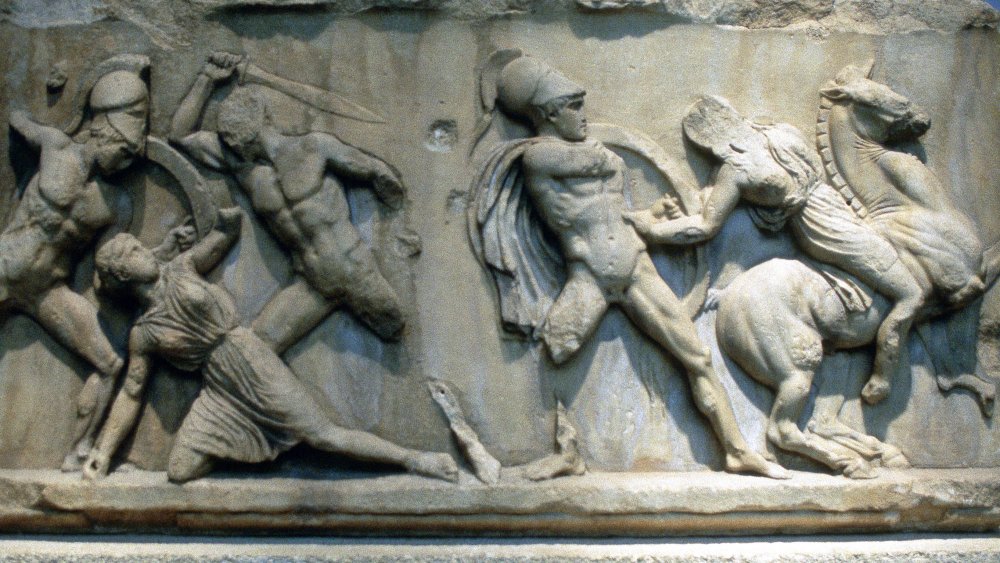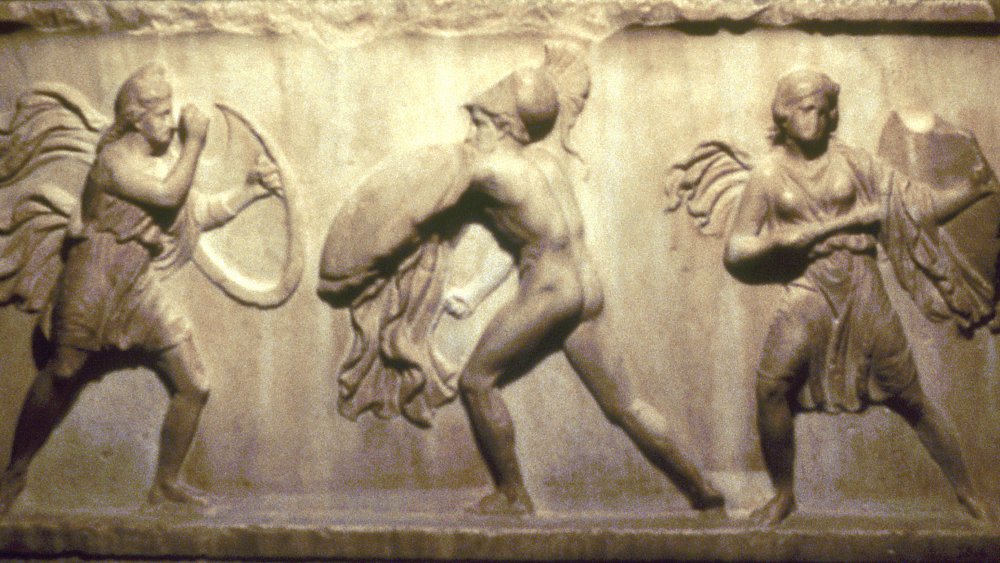Mythological Amazon Women Might Actually Have Existed. Here's Why
Where there's legend, there's history. At least, we hope so, because that makes history class bearable. Human beings need larger-than-life figures, role models — people who overcame the workaday existence of birth, death, and whatever mundane tasks filled the days in between, and did great things greatly. Just like you, and you, and yes, even you, over there. People just like us, only more so. And discovering actual personalities, and actual events, just makes it more interesting. Plus, you get to start sentences with "Well, actually...." Though we'd never do that. (No, not even you, over there.)
Take, for example, what's sometimes referred to as the myth of the Amazons. Forget, for the moment, if you can, the online retailer. Thanks to the success of Gal Gadot and 2017's Wonder Woman (and if you're old enough, Lynda Carter and a TV series), Amazon is kind of on everyone's radar.
The Amazons appear in myth and art
Before all of that, says the Ancient History Encyclopedia, came the Ancient Greek historian Herodotus, writing in the mid-400s BCE, who relates the tale of a race of mounted warrior women who joined societies with the males of the Scythians to create the Sarmatians, residents of what's now Southern Russia. The women had been nomadic raiders; the Scythians, townsfolk. And the story is told that the Amazons agreed — if the Scythians joined them in their journeying, rather than the women settling down. Done, and done.
The Greek myths tell of the Amazons as well — and they are ripping good yarns, as summarized by All That's Interesting — but it was 1861 when Johann Jakob Bachofen published his thesis that the Amazons weren't just a makey-up; they'd really existed, says Smithsonian. But it was just that — a thesis, with no actual physical evidence to back it up.
Archaeology changed that. For instance, researchers working in Russia uncovered the graves of four warrior women. As WBUR reported on January 14, 2020, they weren't just buried; they were buried with their weapons.
Archaeological finds support the legends
There's also a distinct range in the ages of the women found in the graves — from about 12 years old to around 45 or 50. The find buttressed other archaeological evidence suggesting the historical reality of a race of people whose women were truly equal to their men.
Adrienne Mayor, a classicist based at Stanford University, had proposed exactly that in her book The Amazons: Lives and Legends of Warrior Women Across the Ancient World, published in 2014. Mayor, a full-time scholar and researcher with no teaching duties, told The New Yorker that the stories of the Amazons have as much to do with love and relationships as they do with military might: "A prince fights a warrior princess; they're so equally matched that the fight goes on and on, and when they sit down to rest, they fall in love."
Story after story is told of the Amazons (a word which isn't Greek; it's probably from a Persian word for "warrior"), in many different cultures and societies. The stories are good. The history is better.


